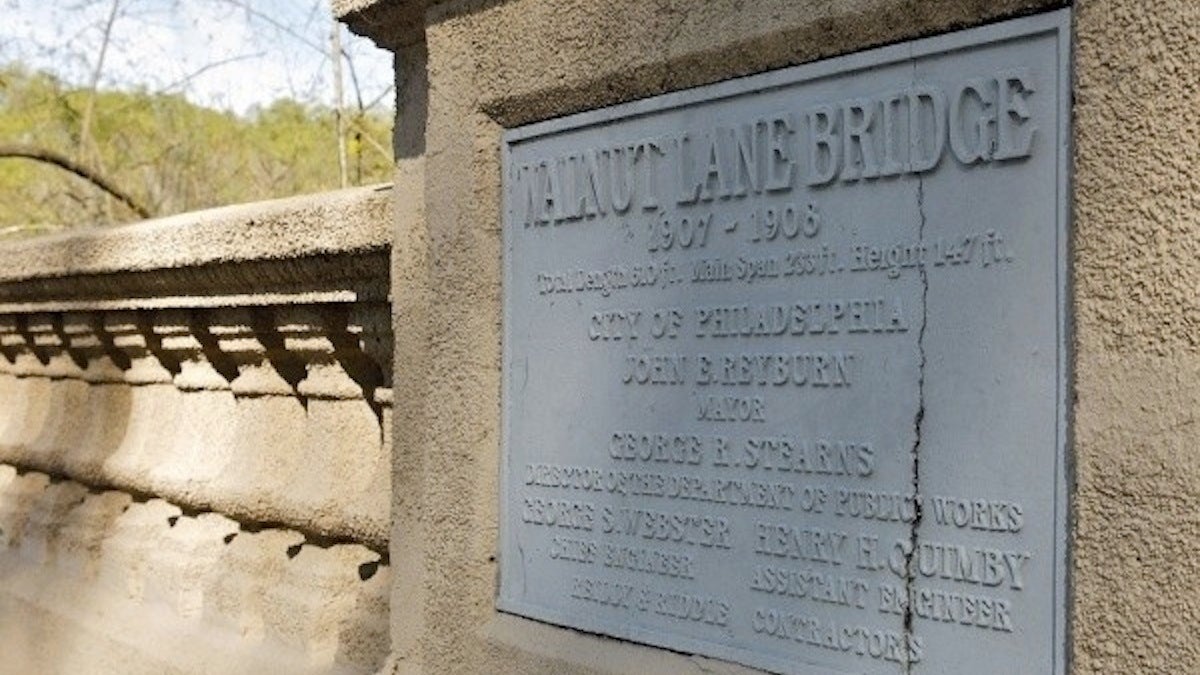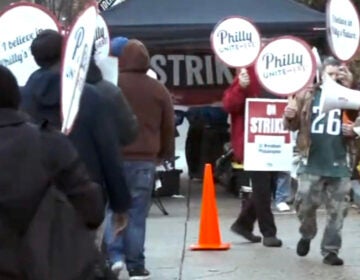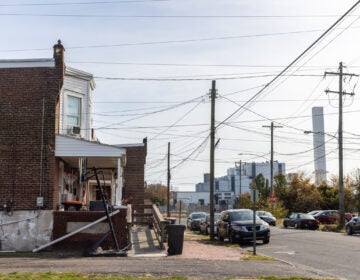Proposed revisions to Walnut Lane Bridge project announced

The Walnut Lane Bridge project is now slated to start up in April or May 2015. (Bas Slabbers/for NewsWorks, file)
Underscoring a significant adjustment in the project’s timeframe, officials announced on Tuesday night that the overhaul of the Walnut Lane Bridge will now incorporate a redesigned roundabout at the bridge’s terminus in Blue Bell Hill.
As reported by NewsWorks, the historic Walnut Lane Bridge was slated to close for six months in 2014 to allow PennDOT to complete an extensive overhaul of the structure, the cost of which is estimated to range from $8 to $10 million.
The plan consists of removing and replacing the bridge’s half-mile roadway, improving lighting and signage, and repairing drainage systems and eroded slopes beneath the bridge.
At a meeting of the Blue Bell Hill Civic Association, project officials relayed that project is currently slated to go up for bid in Sept. 2014, with the selection of a contractor by Jan. 2015. Work will begin in April or May 2015 for up to six months, with the bridge being closed to vehicular traffic for the entirety of the rehabilitation.
Proposed changes
Along with the new timeframe, officials announced that the area around an existing traffic circle known to neighbors as the Circle Garden will also get a facelift. Raised islands known as “pork chops” will be installed from the three major avenues of ingress to the circle, which engineers expect to reduce speed within the circle from over the current 35 mph to 25 mph after their installation.
Improved pedestrian crossings and sidewalk enhancements are also envisioned, as is enhanced traffic signage. The circle itself will remain largely intact save for the installation of concrete aprons to allow for truck traffic. Two bus stops currently in place near the circle will be repositioned.
Project leaders insisted that the plans as presented for the circle were largely preliminary: Edward Myers of engineering firm Kittelson & Associates suggested that his team is “10 percent into the design.”
He was not able to provide a timeline for the proposed alterations, the cost of which will be folded into the bridge rehabilitation’s overall budget.
Community feedback
With their neighborhood poised to bear the much of the burden of the closure, the BBHCA has been at the forefront of community-based oversight of the project since its announcement in 2012.
While the idea for a redesigned roundabout arose out of neighborhood concerns about speed and traffic volume in and around the circle, residents of Blue Bell Hill expressed apprehensions about the roundabout.
At the forefront was the complaint that traffic continues to enter and exit the circle at high rates of speed, with speeds sometimes approaching 60 mph on Walnut Lane between the circle and Wissahickon Avenue.
Myers said that the “pork chops” will mitigate speeds significantly while approaching and leaving the roundabout. Beyond the circle, which falls under the control of the Streets Department, project leaders said that they will coordinate with the city to look for comprehensive solutions to mitigating the impact of lead-footed motorists.
Josh Cohen, special assistant to Fourth District Councilman Curtis Jones, Jr., said at the meeting that his office has been working with Blue Bell Hill residents in the last several months to curb speeders. In addition to city-installed “speed trailers” that encourage drivers to be respectful of posted speed limits, Cohen said that traffic light timings were adjusted, and indicated that a red light camera is being considered at the intersection of Wissahickon Avenue and Walnut Lane.
“There are things underway to slow down traffic on Walnut Lane,” said Cohen. “Hopefully these things, taken together, will help.”
Going forward
At the meeting, project leaders indicated that they will take the feedback from the community and incorporate it into design revisions for the roundabout. BBHCA President Ron Goldwyn said that there will additional opportunities to review plans associated with the project.
While residents and those associated with the design acknowledge that the total impact of the project remains to be seen, no one disputed that the structural integrity of the historic 580-foot span will be secured well into the future. And, quelling the fears of neighbors, there will be aesthetic integrity as well.
“The bridge will look exactly like to what you see today,” said Manjeet Ahluwalia of TransSystems, the company designing the project for PennDOT.
WHYY is your source for fact-based, in-depth journalism and information. As a nonprofit organization, we rely on financial support from readers like you. Please give today.



